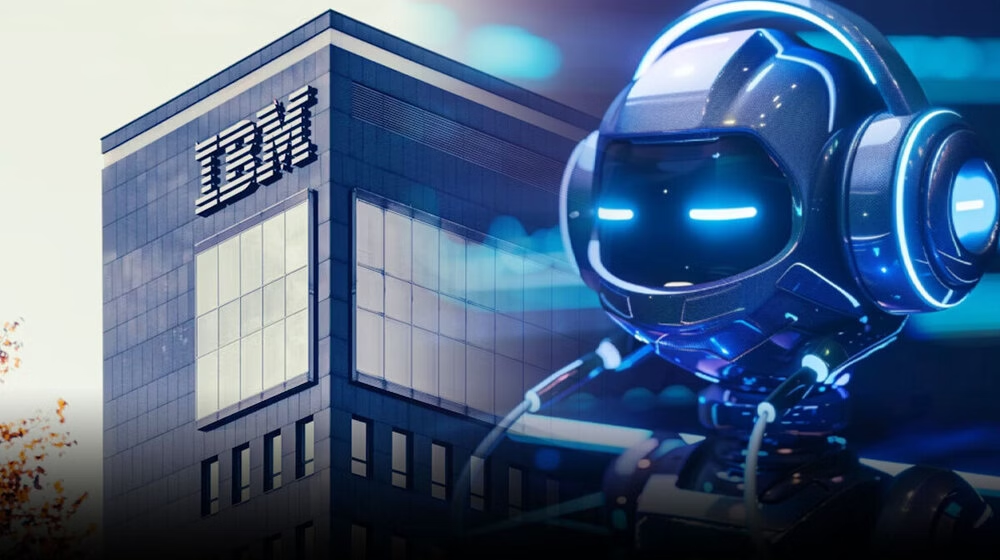IBM’s AI workforce strategy is transforming the relationship between technology and employment in large corporations. In 2023, the company used artificial intelligence to eliminate around 8,000 positions, mostly in administrative and repetitive tasks. However, this reduction did not lead to a lasting drop in overall staff. Instead, it opened up new, higher-skilled positions in areas that artificial intelligence helped expand.
CEO Arvind Krishna explained that automation allowed IBM to reallocate resources toward strategic areas where human expertise was still essential. This shift highlights how AI can both reduce low-skill roles and create new specialized opportunities, signaling a major change in how global companies plan their workforce.
How AI Transformed IBM’s Operations
IBM began its automation journey with internal departments such as human resources. The company launched a digital assistant named AskHR, which automated about 94% of standard HR functions, including payroll queries, leave requests, and document processing. The implementation significantly improved productivity and streamlined operations across the organization.
By using AI to handle repetitive work, IBM achieved an estimated $3.5 billion in productivity gains across more than 70 business units. Tasks that once required manual effort could now be completed instantly, freeing employees to focus on problem-solving, innovation, and creative projects.
From Job Reductions to New Opportunities
While IBM’s AI workforce strategy initially led to job cuts, it soon created openings in other departments. The company started hiring professionals in software engineering, marketing, sales, and data science—areas where AI tools required human supervision and decision-making.
The cost savings from automation were redirected to innovation and product development, enabling IBM to invest in fields that demanded human intelligence and creativity. This reallocation of funds also reflected a broader global trend in which automation removes repetitive roles but drives demand for advanced technical skills.
Human and AI Collaboration
IBM did not view AI as a complete replacement for human labor. Instead, it introduced a hybrid work model where humans and AI systems collaborate. Artificial intelligence performs structured, predictable tasks efficiently, while employees focus on strategic thinking, creativity, and customer interaction.
This approach improved overall service quality. After implementing AI-driven tools, IBM’s Net Promoter Score—a measure of customer satisfaction—rose from -35 to +74. However, approximately 6% of all HR-related queries still required human assistance, proving that AI cannot yet handle every situation independently.
Challenges and Limitations
Despite its success, IBM’s AI workforce strategy faced challenges. Some employees struggled to adapt to new technologies, while others required retraining to shift into technical or analytical positions. Additionally, AI systems remain limited in handling complex or emotionally sensitive situations, emphasizing the continued need for human judgment and empathy in the workplace.
IBM’s approach underlined the importance of continuous learning and skill development. The company’s progress relied not just on adopting technology but on preparing its workforce to use it effectively.
The Future of Work at IBM
IBM’s strategy offers valuable lessons for other organizations exploring automation. The company demonstrated that artificial intelligence can reduce costs and enhance efficiency while still creating new opportunities for growth. Rather than simply using AI to cut jobs, IBM used it to redesign its workforce and prepare for a technology-driven future.
This aligns with predictions from the World Economic Forum, which estimates that while AI could replace around 92 million jobs globally by 2030, it will also generate new positions in fields like data science, machine learning, and automation management. IBM’s case shows that AI’s real impact depends on how it is implemented and managed.
IBM’s AI workforce strategy represents a significant evolution in how technology shapes employment. By using artificial intelligence to handle repetitive work and reinvesting the savings into higher-value roles, IBM turned a potential downsizing story into one of innovation and renewal.
The company’s experience proves that AI can be more than a cost-cutting tool—it can be a driver of transformation. When used thoughtfully, artificial intelligence empowers organizations to build a workforce that is not only more efficient but also better equipped for the future of work.



